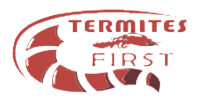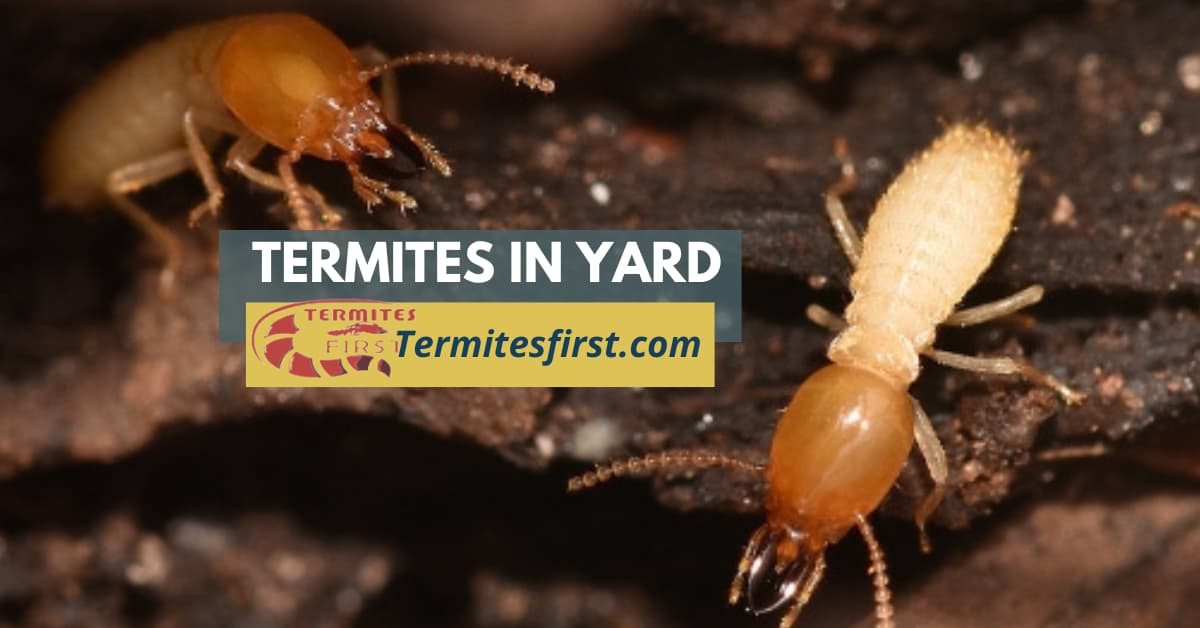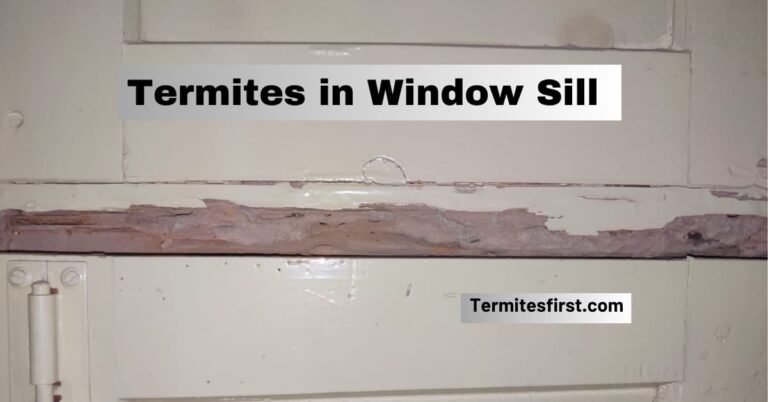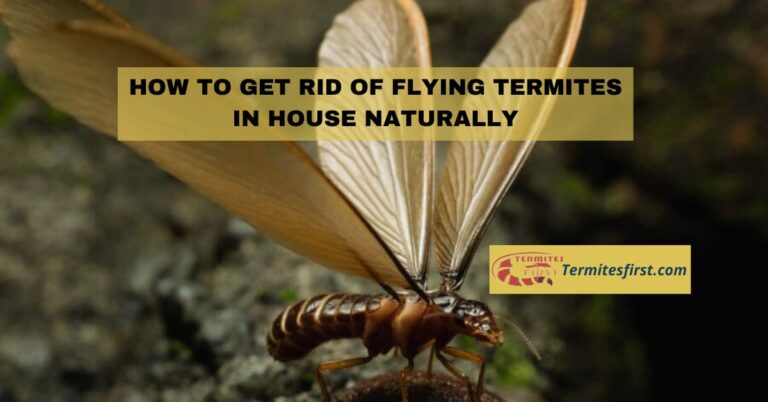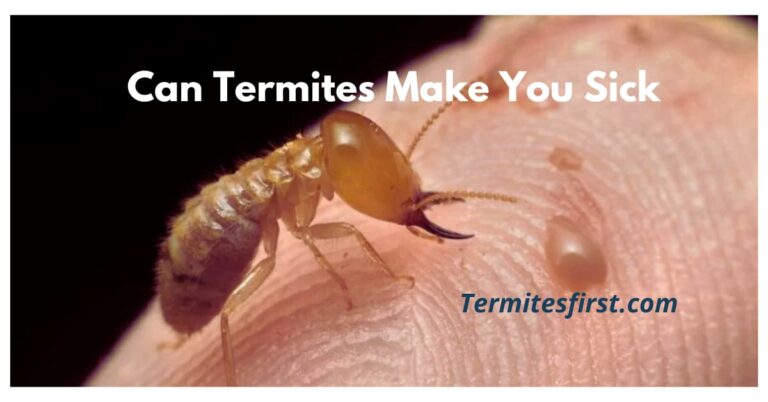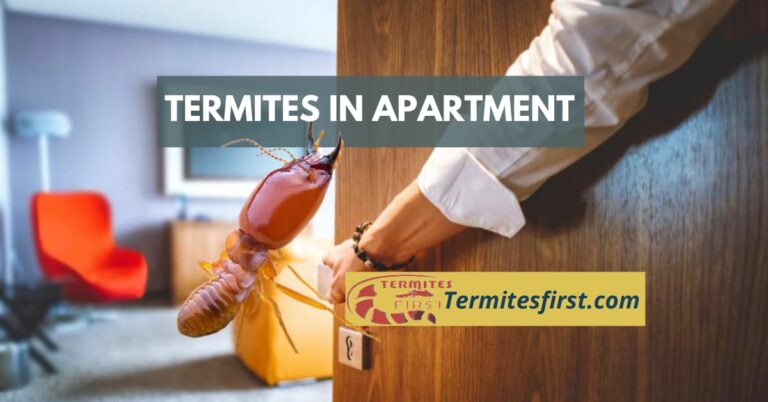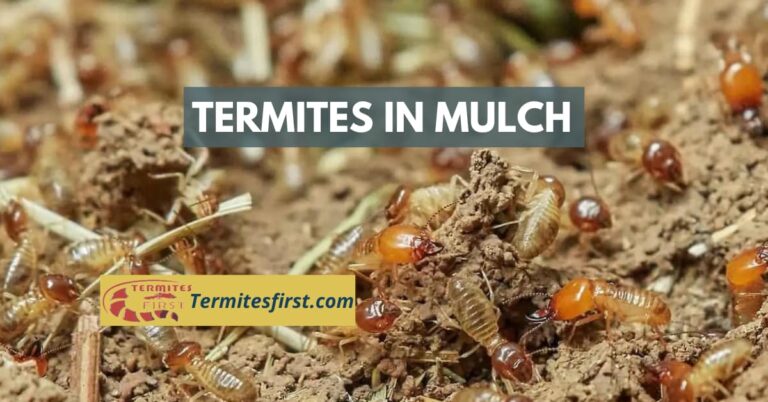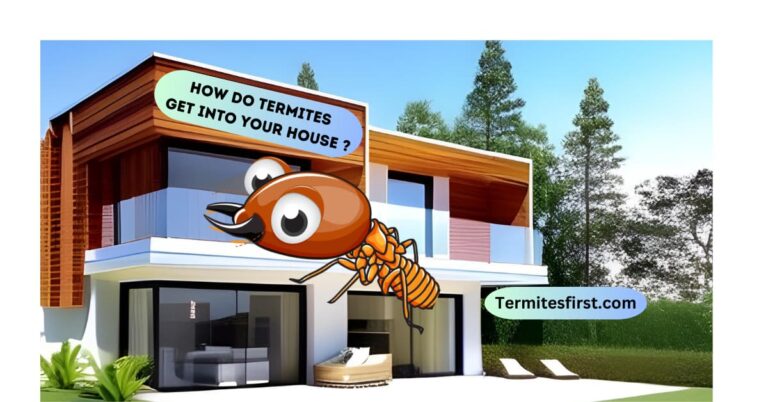Termites in Yard: Key Signs to Spot Them Early
I’ve always been curious about what’s lurking in my yard, including visible termite activity, termite mounds, and whether there are termites indoors or live termites. Termites can be sneaky little pests that wreak havoc on my house, garden, and nest in their own way. Spotting them early is crucial to prevent costly damage. I want to share the way to identify signs of termites in your yard and the best methods for control in your house. Understanding their habits helps me protect my property effectively.
In this post, I’ll cover everything from warning signs like visible termite activity and termite feces to prevention tips for your house against active termites. I’ll also discuss why it’s essential to act quickly before they spread, like house termite feces. With the right knowledge, I can keep my house and yard safe and healthy. Let’s dive into the world of termites in the house and learn how to tackle these unwelcome guests together.
Key Takeaways
- Regularly check your house and yard for signs of termites, such as mud tubes or damaged wood, to catch infestations early.
- Learn how to identify termites in grass and soil around your house by looking for their distinct physical traits, which can help you differentiate them from other pests.
- Understand the key characteristics of house termites, such as their soft bodies and straight antennae, to improve your identification skills.
- Distinguish termites from ants by noting differences in their body shape and wing structure; this knowledge is crucial for accurate pest control.
- Familiarize yourself with the types of termites common in your area to better prepare for potential infestations.
- Implement preventive measures, like removing tree stumps and maintaining proper yard drainage, to reduce the risk of termite return after treatment.
Signs of Termites in Yard
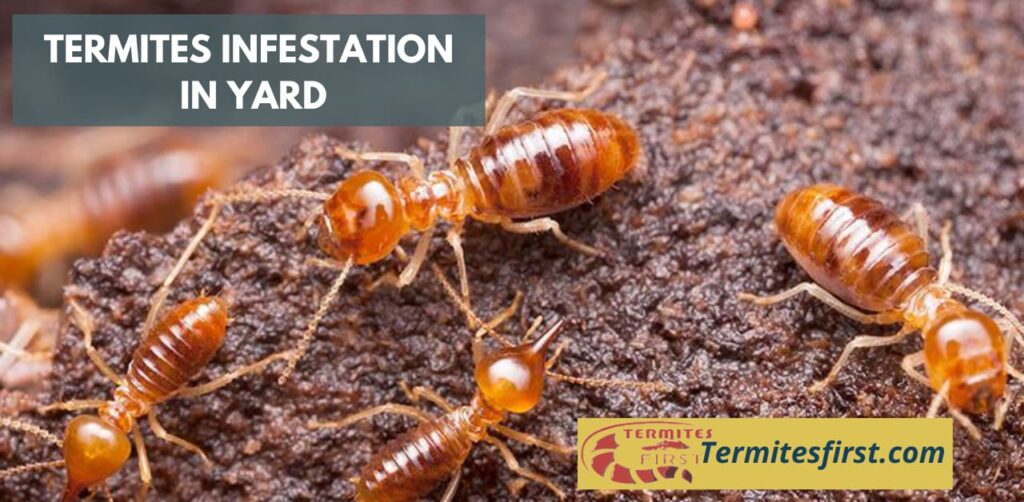
Mud Tubes
Mud tubes are strong indicators of termite activity. These tubes can be found on trees or soil surfaces. They serve as highways for termites moving between their nests and food sources. I often check my garden for these tubes, especially near any wooden structures. If you see mud tubes, it’s a clear sign that termites may be nearby.
Termite Droppings
Termite droppings look like small pellets or sawdust. These droppings indicate a termite infestation in the area. They are usually found near wood or other cellulose materials. When I find these droppings, I know to investigate further. It’s important to act quickly, as this can lead to more serious damage.
Visible Infestation
A visible termite infestation can show through damaged wood. If you notice hollow-sounding wood or peeling paint, you might have a problem. Drywood termites often cause this type of damage. They live inside the wood and consume it from the inside out. I’ve seen this firsthand in my own home, where damaged beams led to costly repairs.
Dead Termites
Finding dead termites is another sign of an infestation. The presence of dead termites means that something is affecting their colony. This could be a natural event or a treatment method. If I find them, I look for other signs nearby to assess the situation better.
Gardening Impact
Gardening can impact how termites behave in your yard. Certain plants attract termites more than others. For example, wooden mulch can provide shelter and food for them. I’ve learned to use alternatives to avoid inviting these pests into my garden space.
Nest Locations
Termite nests can often be hidden underground or within trees. Knowing where to look helps identify potential problems early on. Look for areas with soft or decaying wood, as they may harbor colonies. I always inspect old tree stumps in my yard, as they can become a nesting ground.
Professional Help
Pest professionals can clarify concerns about termite presence in your yard. They have tools and knowledge to detect infestations that may not be visible to the untrained eye. When I suspect a problem, I don’t hesitate to call in experts for help. Their advice has been invaluable in maintaining my property.
Identifying Termites in Grass and Soil
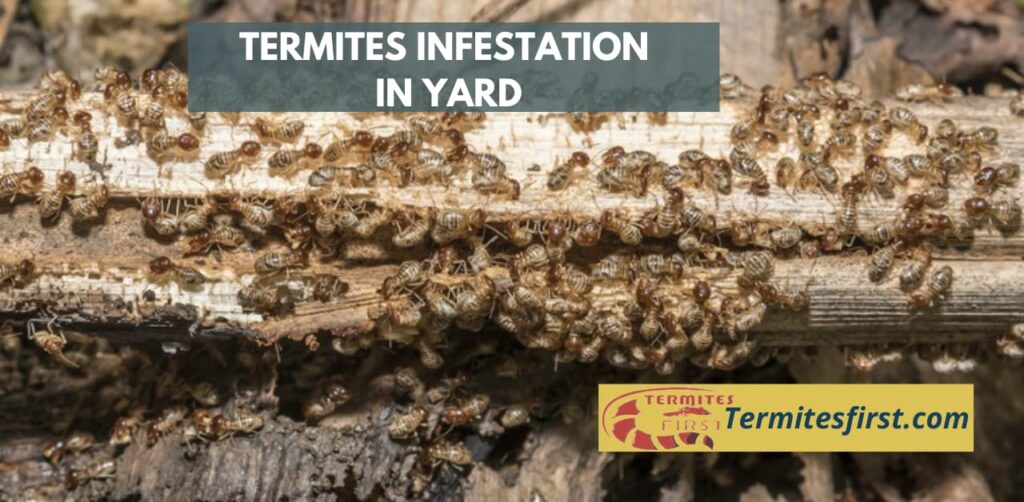
Swarming Season
Look for swarming termites during warm and humid months. These insects often leave their nests to find new homes. In many regions, this usually happens between spring and summer. I remember the first time I noticed them in my yard. It was a sunny day, and swarms of winged termites flew around. Seeing them made me realize how important it is to be alert during these seasons.
Visible Termites
Search for visible termites in grass and soil. These pests can be seen with the naked eye if you know where to look. They are usually small, measuring about 1/4 to 1/2 inch long. Their bodies appear pale or light brown. I often check the edges of my lawn after heavy rain. That’s when they seem more active and easier to spot.
Signs of Activity
Check for signs of termite activity in the soil. Look for disturbed earth or small holes that could indicate tunneling. Termites create mud tubes to travel from their nests to food sources. These tubes can be found above ground or within soil layers. If I see any mud or dirt piles, I take it seriously. It may mean termites are nearby.
Inspecting the Ground
Conduct a thorough termite inspection of your yard. Focus on areas near wooden structures or mulch piles. Termites thrive in moist environments, so damp areas attract them. When inspecting, dig lightly into the dirt to see if any tunnels exist below the surface.
Soil Conditions
Pay attention to the soil conditions in your yard. Healthy soil is essential for plant growth but also provides a habitat for termites. Loose or soft soil may indicate termite activity beneath the surface. If I notice unusual softness, I dig deeper to investigate.
Grass Health
Monitor the health of your grass as well. Wilting or dying patches can signal underlying issues, including pest infestations like termites. Check for any signs of decay in nearby wood or roots that could attract these pests. I often find myself examining my lawn closely during dry spells.
Key Characteristics of Termites
Body Structure
Termites have distinct physical features. Their elongated bodies are soft and pale in color. This makes them easy to spot if you know what to look for. I remember the first time I saw a termite. It was crawling on some wood in my yard, and its shape caught my attention.
Different termite species vary in size. Most range from small to medium, usually measuring between 1/8 inch to 1 inch long. This size helps differentiate them from other pests like ants.
Their body structure is unique. Termites possess straight antennae that help them sense their environment. They also have a broad waist, setting them apart from similar creatures. These characteristics are important for identifying termites in your yard.
Color Variations
The color of termites can vary by species. Some appear light brown or yellowish, while others may seem almost white. The lighter colors often help them blend into their surroundings. This camouflage can make them harder to spot.
I once found a colony near my fence that had darker shades. This made me realize there are many types of termites, each with different appearances. Knowing these color variations can aid in identifying which species might be invading your property.
Nesting Habits
Termites build nests in various locations. Many prefer moist environments, often found underground or within timber structures. They create holes in wood as they consume it, which can lead to significant damage over time.
Certain termite species construct mounds above the soil, while others dig complex tunnels inside the wood they invade. These structures act as both homes and breeding sites for their colonies. If you spot holes or frass (which is termite waste in your yard, this may be a sign of an infestation.
Moisture Preferences
Moisture plays a crucial role in termite behavior. Most species thrive in damp conditions, making wet wood an ideal target for their feeding habits. I’ve seen how quickly untreated wood rots when exposed to moisture; this attracts termites even more.
Keeping your property dry is essential for prevention. Regularly check areas where water may collect, such as gutters and downspouts.
Impact on Structures
Termites can cause severe damage to structures if left unchecked. They consume wood and other cellulose materials found in buildings and fences. Over time, this can weaken the integrity of your home or property.
Being aware of these key characteristics helps homeowners take action early. Regular inspections can save you from costly repairs later on.
Distinguishing Termites from Ants
Body Shape
Both termites and ants can swarm in your yard. However, their body shapes are quite different. Termites have a uniform width throughout their bodies. This gives them a smooth, elongated appearance. In contrast, ants display a pinched waist. This noticeable difference makes it easier to identify them.
I often find myself observing these insects during the summer months. Watching them helps me understand their behaviors better.
Antennae Differences
Antennae provide another clue for distinguishing these insects. Termites possess straight antennae that do not bend. This feature contrasts sharply with ants, which have elbowed antennae. The angle in an ant’s antenna can help you quickly tell the two apart.
Recognizing these differences has helped me identify pests in my yard more efficiently. Knowing what to look for saves time and reduces confusion.
Wing Structure
Wings also play a vital role in identifying these insects. Winged termites have two pairs of wings that are equal in size. Both sets look similar and help them glide during swarming events. On the other hand, ants have one pair of wings that is larger than the other. This size difference is another key factor to consider.
When I first noticed flying termites around my home, I was unsure whether they were ants or termites. Checking their wings was a straightforward way to clarify this for me.
Behavior Observations
Behavior is another indicator of whether you are dealing with termites or ants. Termites tend to swarm in large groups, especially during warm weather conditions. They often emerge after rainstorms, looking for new locations to establish colonies. Ants may also swarm but usually do so for different reasons, such as finding food or new nesting sites.
I remember once seeing a swarm in my yard after a heavy rain. It was fascinating to watch how the termite swarmers moved together, searching for new homes.
Nesting Habits
Nesting habits further differentiate these insects. Termite colonies build mud tubes for protection and travel between their nests and food sources. These mud tubes can be found above ground and are a clear sign of termite activity. In contrast, ant nests can often be seen as small mounds or holes in the soil.
Understanding these signs has been crucial in managing pest control around my property.
Types of Termites to Know
Subterranean Termites
Subterranean termites are the most common type in the U.S. They live underground and build extensive colonies. These termites need moisture and typically enter homes through the soil. Their size ranges from 1/8 to 1/4 inch long. I’ve noticed that they often create mud tubes, which help them travel between their nests and food sources.
These pests can cause significant damage to wooden structures. In fact, they are responsible for billions of dollars in property damage each year. Homeowners should regularly check for signs of these termites. Early detection can save a lot of money in repairs.
Drywood Termites
Drywood termites differ from subterranean ones. They do not require contact with the soil. Instead, they infest wood directly. Their colonies can exist within wooden structures like beams and furniture. They are generally larger than subterranean termites, measuring about 1/2 inch long.
I find it fascinating how drywood termites can survive on moisture from the wood itself. They can live in dry conditions, making them harder to detect. Signs of infestation include small pellets, known as frass, which look like sawdust. Homeowners may overlook these signs, thinking they are just debris.
Dampwood Termites
Dampwood termites thrive in decaying wood and areas with high moisture. They prefer wood that is already damaged or rotting. Their size can range from 1/2 to 3/4 inch long, making them some of the largest termites.
They usually do not invade homes unless there is water damage present. I’ve seen dampwood termites in old trees or logs left in yards. Their presence indicates a moisture problem that needs attention.
Recognizing Infestations
Recognizing different types of termites is crucial for effective control. Subterranean termites make mud tubes; drywood termites leave behind frass; dampwood termites indicate moisture issues. Each type has unique characteristics that can help identify an infestation early.
Homeowners should monitor their yards and homes for these signs. Regular inspections can prevent extensive damage caused by these pests. Understanding the types of termites helps in choosing the right treatment options.
Warning Signs of Infestation
Mud Tubes
Detecting mud tubes is crucial when checking for termites. These tubes are made from soil, wood, and saliva. They serve as highways for termites moving between their colony and food sources. I often find these tubes along the foundations or walls of my home. If you see them, it’s a clear sign of termite activity.
These mud tubes can be thin or thick, depending on the level of infestation. They usually measure about the width of a pencil. If you notice these structures, it’s time to consider an inspection. Ignoring them can lead to significant damage.
Flying Termites
Identifying flying termites is another important sign of an infestation. These insects are also known as swarmers. They emerge during specific seasons, typically in spring or early summer. Their presence indicates that an established colony is nearby. Swarmers have wings and often look similar to flying ants.
I remember seeing swarmers around my porch one evening. It caused me to worry about a potential infestation in my yard. Observing these insects means you should act quickly. Look for signs such as discarded wings near windows or doors.
Wood Damage
Wood damage is one of the most telling signs of termite activity. Inspect wooden structures for hollowed-out sections or tiny holes. Termites eat wood from the inside out, leaving only a thin layer on the surface. This can lead to structural issues over time.
If I notice any soft spots in wooden furniture or beams, I take it seriously. It may indicate that pests are at work beneath the surface. Checking for wood damage regularly helps catch infestations early.
Excrement from termites also serves as a warning sign. This droppings resemble small pellets and can often be found near infested areas. Collecting samples can help identify if they belong to termites or other pests.
Panic and Action
Feeling panic is common when discovering signs of termites. Many homeowners worry about the potential damage these destructive pests can cause. Taking immediate action is essential to prevent further issues.
Contacting pest control professionals can provide peace of mind. They will conduct a thorough inspection and recommend treatment options based on the findings.
Effective Ways to Search for Termites
Visual Inspection
I often start by conducting a thorough visual inspection around my property. This method allows me to spot active termites or signs of their presence early on. Focus should be on wooden structures, including decks and fences. Look for any wood that appears damaged or has a hollow sound when tapped.
Inspect soil near wooden structures as well. Termites often build mud tubes in the soil to reach their food sources. These tubes can be a clear sign of infestation. I remember finding a mud tube along my fence line once. It was a clear indicator that I needed to take action.
Use a Flashlight
Using a flashlight is essential during inspections. Dark areas like basements, attics, and crawl spaces are prime locations for termites to hide. Shine the light into corners and behind objects where they might be lurking.
Look for discarded wings, frass, or other signs of common termite locations. I have found wings scattered near windows in my attic, which pointed to an active colony nearby. These details can help you identify potential infestations before they become severe.
Tapping Wood Surfaces
Tap on wood surfaces around your home. Listen carefully for hollow sounds that may indicate termite damage inside the wood. If you hear a hollow sound, it could mean that termites have been eating away at the structure.
For example, I once discovered a hollow sound coming from my porch railing. A quick inspection revealed extensive damage caused by termites over time. This experience taught me the importance of regular checks.
Regular Inspections
Regular termite inspections are crucial for maintaining a termite-free yard. Schedule these inspections at least once a year with professionals if possible. They know exactly what to look for and can provide insights you might miss.
Professional termite inspection services use advanced tools and techniques to detect termites effectively. They can find hidden colonies that may not be visible during a casual check-up.
Using Termite Baits
Consider using termite baits as part of your strategy. These baits attract termites and contain chemicals that eliminate them upon consumption. Place them strategically around your property where you’ve noticed activity.
Baiting systems can help monitor termite activity over time as well. I installed bait stations after noticing some signs of infestation in my yard, which helped manage the situation effectively.
Safe Removal of Tree Stumps
Clear Area
Clearing the area around the tree stump is crucial. This step helps assess the extent of the termite infestation. I often find that a clean space makes it easier to spot signs of damage. Look for mud tubes and damaged wood. These signs indicate where termites have been active.
Once you clear the area, take note of any other nearby wood structures. They could also be at risk. Removing debris and excess vegetation can help prevent further infestations. A tidy yard promotes better health for your plants and trees.
Apply Termiticide
Applying a termiticide treatment directly to the stump is essential. This chemical helps eliminate termites effectively. It’s important to follow the manufacturer’s instructions carefully. Mixing the solution correctly ensures maximum effectiveness.
After applying the termiticide, treat the surrounding soil as well. This action targets any hidden termites in the ground. I remember using a similar method when dealing with an infestation in my yard. The results were noticeable within weeks.
Consider Complete Removal
Considering complete removal of the stump is wise. Leaving it in place can lead to future termite problems. A decaying stump provides food for termites, inviting them back into your yard. Removing it promotes better health for surrounding plants.
Professional services can help with stump removal if needed. They have tools and expertise that make the job easier and safer. If you choose to do it yourself, plan ahead. Use a chainsaw or an axe to cut it down to ground level.
After cutting, fill the hole with soil or mulch to promote new growth in that area.
Benefits of Stump Removal
Removing stumps has several benefits:
- Prevents termite infestations
- Improves yard aesthetics
- Allows for new plant growth
A clean yard looks better and feels healthier too. I have noticed that after removing stumps, my garden flourished more than before.
Preventing Termite Return After Treatment
Chemical Barriers
Maintaining a chemical barrier is crucial for termite prevention. This barrier protects homes from new termite infestations. Chemical treatments create a protective zone around the foundation. These treatments can last several years if applied correctly. I remember when my neighbor had a serious infestation. Their termite control expert emphasized the importance of reapplying these chemicals regularly.
Regular inspections are essential after treatment. Homeowners should look for signs of new termite activity. Signs include mud tubes or damaged wood. Catching these early can save money and hassle.
Moisture Control
Moisture attracts termites. Reducing moisture in yards is vital for prevention. Homeowners should fix leaky faucets and gutters. Proper drainage systems help keep the yard dry. I often check my yard for standing water after heavy rain. This small step has helped me avoid any serious issues.
Sealing entry points is another key measure. Cracks in walls and gaps around pipes can invite termites inside. Using caulk or foam sealant can close these gaps effectively. Regular maintenance of these areas reduces risks significantly.
Termite Bait Systems
Termite bait systems are effective tools for long-term control. These systems use bait to attract termites away from the home. Once termites consume the bait, they carry it back to their colony. Over time, this can eliminate entire colonies.
Termite baits work by disrupting the growth of termites. They contain slow-acting insecticides that affect reproduction and development. Installing these systems requires expertise, so consulting a termite control specialist is wise.
Professional Help
Engaging a termite control expert ensures proper treatment and prevention strategies. These specialists assess the property and recommend tailored solutions. They often suggest both chemical treatments and bait systems based on specific needs.
Homeowners should not attempt DIY methods without understanding the risks involved. For example, using termite removal kits may not address underlying issues effectively. Professionals have access to more potent treatments that offer better protection.
Ongoing Monitoring
Ongoing monitoring is crucial after initial treatment. Regular checks help identify any signs of returning termites quickly. Setting up an inspection schedule with a pest control company can be beneficial.
Keeping records of inspections and treatments also aids in tracking progress over time. My routine includes documenting all pest-related activities in my home journal.
Conclusion:-
Dealing with termites in your yard can be a real hassle. I’ve shared key insights on spotting these pests and understanding their behavior. Knowing the signs and types of termites is crucial for effective management. I’ve also covered how to safely remove tree stumps and prevent future infestations.
Taking action is essential. Don’t wait until it’s too late; check your yard regularly. If you suspect an infestation, act fast to protect your home. I recommend consulting a professional for thorough inspections and treatment plans. Stay informed and proactive to keep your yard termite-free!
FAQ’s:-
Look for mud tubes, discarded wings, and hollow-sounding wood. Also, check for damaged plants or trees. Early detection is key to preventing severe damage.
Termites often create small mounds or tunnels in the soil. Look for soft, spongy areas in grass or patches of dead vegetation, which may indicate their presence.
Termites have a soft body, straight antennae, and a broad waist. They vary in color from light brown to black, depending on the species.
Termites have straight antennae and a uniform body shape, while ants have bent antennae and a narrow waist. Observe their behavior; termites typically swarm at dusk.
The main types include subterranean, drywood, and dampwood termites. Each type has unique habitats and behaviors that affect treatment methods.
Warning signs include visible wood damage, droppings resembling sawdust, and swarming insects during warm months. If you notice these signs, act quickly.
Inspect your yard regularly, focusing on wooden structures and damp areas. Use a flashlight to look for hidden signs and consider professional inspections if needed.
